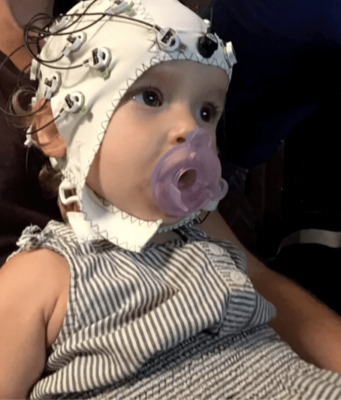A groundbreaking study at King’s College London has delved into the intricate world of infant brain development, revealing distinct brain connectivity patterns in moment-to-moment activity between preterm and term infants. The study, published in Nature Communications, sheds light on the crucial role dynamic brain connectivity plays in developmental milestones, such as movement, language, cognition, and social behavior, as observed 18 months later.
Analyzing Brain Scans: Unveiling the Brain Connectivity Patterns Dynamics
Led by Dr. Dafnis Batallé, Senior Lecturer in Neurodevelopmental Science at the Institute of Psychiatry, Psychology & Neuroscience, the research team employed advanced techniques to analyze functional Magnetic Resonance Imaging (fMRI) data from a cohort of 390 babies, including 324 full-term infants and 66 Preterm infants born before 37 weeks of gestation. Dynamic perspectives in evaluating moment-to-moment changes in connectivity during the infants’ time in the scanner set the stage for a comprehensive understanding of early brain development.
Identification of Transient States
The study identified six distinct brain states, three involving the entire brain and three confined to specific regions – occipital, sensorimotor, and frontal. This novel approach to understanding infant brain connectivity broadened the scope and allowed a nuanced comprehension of how these patterns evolve.
Linking Brain Connectivity Patterns to Preterm Birth

Comparisons between term and Preterm infants revealed varied connectivity patterns associated with Preterm birth. Preterm infants exhibited an increased duration in frontal and occipital brain states compared to their term counterparts. This groundbreaking insight suggests that the time spent in or outside the womb significantly shapes early brain development.
Dr. Batallé emphasized, “Although we know how influential brain connectivity is on development, we know little about the patterns of dynamic functional connectivity in early life and how they link to how our brains mature.” By analyzing a large cohort of infants, the study has initiated identifying transient states of connectivity that may hold the key to understanding early brain development and its implications for future behaviors and functions.
Applications in Developmental Milestones
The research advances our understanding of early brain development and highlights the potential impact of these connectivity patterns on subsequent developmental milestones in childhood. The dynamic approach to assessing brain connectivity during infancy provides a platform to explore the intricate interplay between neural networks and developmental outcomes.
Implications for Support and Intervention
Professor Grainne McAlonan, Interim Director of NIHR Maudsley BRC and Professor of Translational Neuroscience, expressed optimism about the study’s implications. “The difference between term and Preterm babies suggests that time spent in or outside the womb shapes brain development. We now need to try and find out if it is possible to use these insights to identify and help those who need additional support,” she stated.
The potential to identify infants who may benefit from additional support based on their unique brain connectivity patterns opens new avenues for early intervention and personalized care.
Conclusion
In deciphering the complexities of brain connectivity patterns in Preterm and term infants, the research conducted by King’s College London marks a substantial advancement in comprehending early brain development. This study establishes a groundwork for investigating how these patterns may influence future behaviors and functions by pinpointing temporary connectivity states and linking them to developmental milestones. As scientists persist in unraveling the enigmas surrounding infant brain development, the potential for promising applications in personalized interventions and support for at-risk infants continues to grow.
Reference
França LGS, Ciarrusta J, Gale-Grant O, Fenn-Moltu S, Fitzgibbon S, Chew A, Falconer S, Dimitrova R, Cordero-Grande L, Price AN, Hughes E, O’Muircheartaigh J, Duff E, Tuulari JJ, Deco G, Counsell SJ, Hajnal JV, Nosarti C, Arichi T, Edwards AD, McAlonan G, Batalle D. Neonatal brain dynamic functional connectivity in term and preterm infants and its association with early childhood neurodevelopment. Nat Commun. 2024 Feb 8;15(1):16. doi: 10.1038/s41467-023-44050-z. PMID: 38331941; PMCID: PMC10853532.
About Docquity
If you need more confidence and insights to boost careers in healthcare, expanding the network to other healthcare professionals to practice peer-to-peer learning might be the answer. One way to do it is by joining a social platform for healthcare professionals, such as Docquity.
Docquity is an AI-based state-of-the-art private & secure continual learning network of verified doctors, bringing you real-time knowledge from thousands of doctors worldwide. Today, Docquity has over 400,000 doctors spread across six countries in Asia. Meet experts and trusted peers across Asia where you can safely discuss clinical cases, get up-to-date insights from webinars and research journals, and earn CME/CPD credits through certified courses from Docquity Academy. All with the ease of a mobile app available on Android & iOS platforms!






